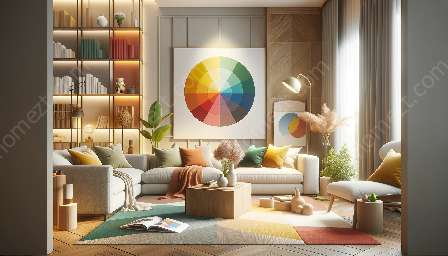Color theory is a fundamental aspect of textile design and production, playing a crucial role in creating visually appealing and impactful textiles. Understanding the principles of color theory can greatly enhance a designer's ability to create harmonious and attractive textile designs. In this comprehensive guide, we will delve into the captivating world of color theory, its relevance in textile design, and its applications within the textiles & nonwovens industry.
Understanding the Basics of Color Theory
Color theory is the art and science of combining colors, which encompasses the visual effects of how colors mix, match, or contrast with each other. It involves the study of color hues, shades, tints, and tones, as well as the interplay between different colors.
Textile designers leverage color theory to evoke specific emotions, create visual interest, and communicate narratives through their designs. By understanding the basics of color theory, designers can effectively utilize colors to convey a wide array of messages and aesthetics.
The Role of Color Psychology in Textile Design
Color psychology, a significant component of color theory, explores the psychological and emotional impact of different colors on individuals. This field is pivotal in textile design, as colors can influence consumer perceptions, preferences, and behaviors.
For instance, warm colors such as red, orange, and yellow are often associated with energy, excitement, and passion, making them suitable for creating vibrant and dynamic textile designs. In contrast, cool colors like blue, green, and purple tend to evoke feelings of calmness, tranquility, and serenity, making them ideal for creating soothing and relaxing textile patterns.
Primary Colors and Color Wheel
In color theory, primary colors - red, yellow, and blue - are the foundation of all other colors. They cannot be created by mixing other colors together and are used to produce all other hues on the color wheel.
The color wheel, a visual representation of colors arranged in a circle, illustrates the relationships between primary, secondary, and tertiary colors. This tool serves as a valuable resource for textile designers, aiding them in selecting and combining colors to achieve desired effects in their designs.
Color Harmony in Textile Design
Color harmony refers to the pleasing arrangement of colors in a design, resulting in a visually balanced and aesthetically pleasing outcome. There are various color harmonies such as complementary, analogous, triadic, and monochromatic, each offering distinct visual effects.
Textile designers employ color harmony to create cohesive and appealing textile patterns, ensuring that the selected colors resonate harmoniously with each other. By understanding and applying principles of color harmony, designers can elevate the visual impact of their textile designs.
Color Applications in Textiles & Nonwovens Industry
The textiles & nonwovens industry extensively utilizes color theory in various stages of textile production, including dyeing, printing, and finishing processes. Precise color management is crucial to ensure uniformity and accuracy in the final textile products.
Advancements in color technology, such as color matching systems and digital color tools, have revolutionized the way colors are manipulated and reproduced in textiles. These innovations enable textile manufacturers to achieve consistent color outcomes, meet market demands, and drive product innovation.
Conclusion
Color theory is an indispensable element of textile design, serving as a powerful tool for designers and manufacturers to create compelling and marketable textile products. By mastering the principles of color theory and understanding its applications in textiles & nonwovens, designers can unleash their creativity and bring captivating textile designs to life.



